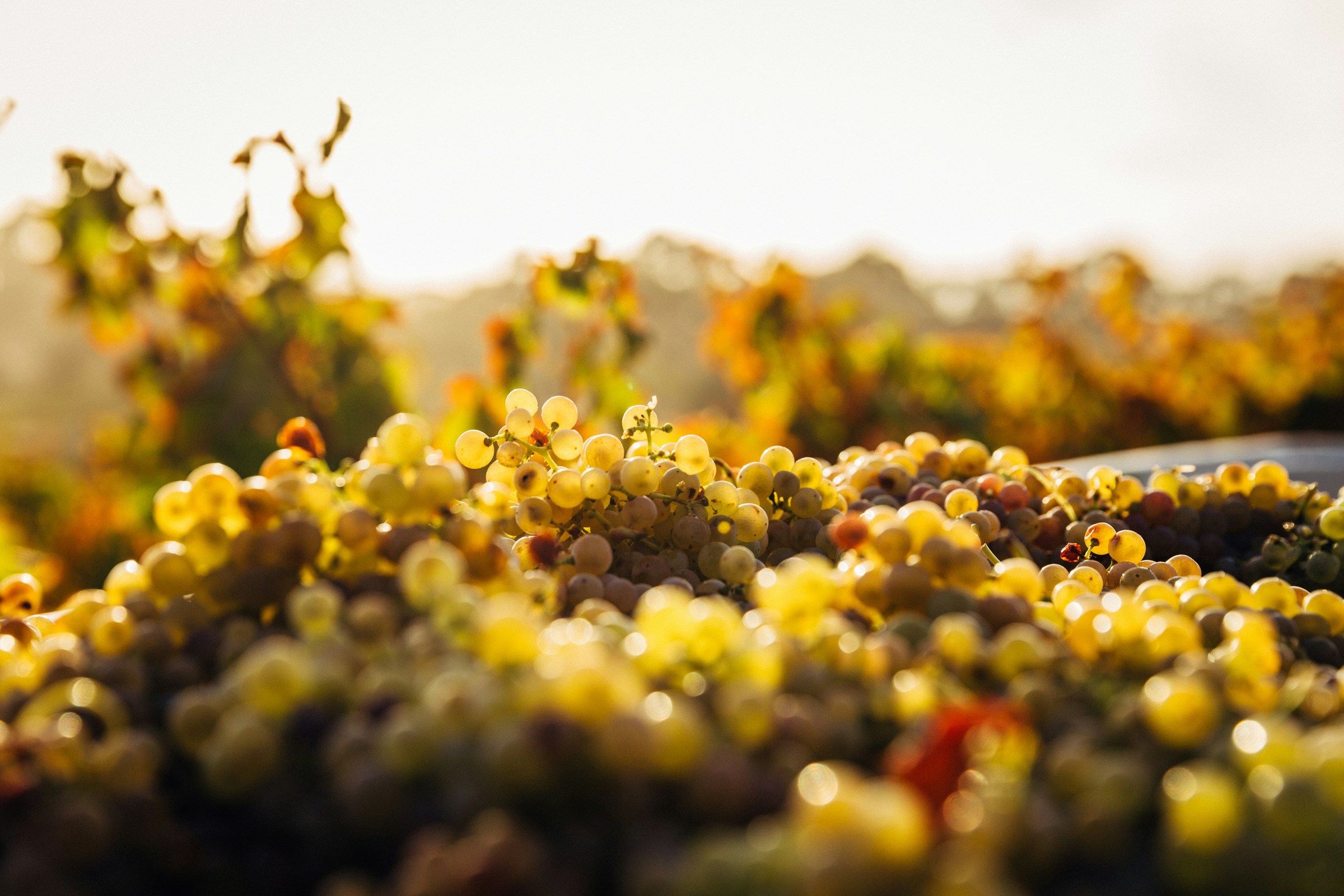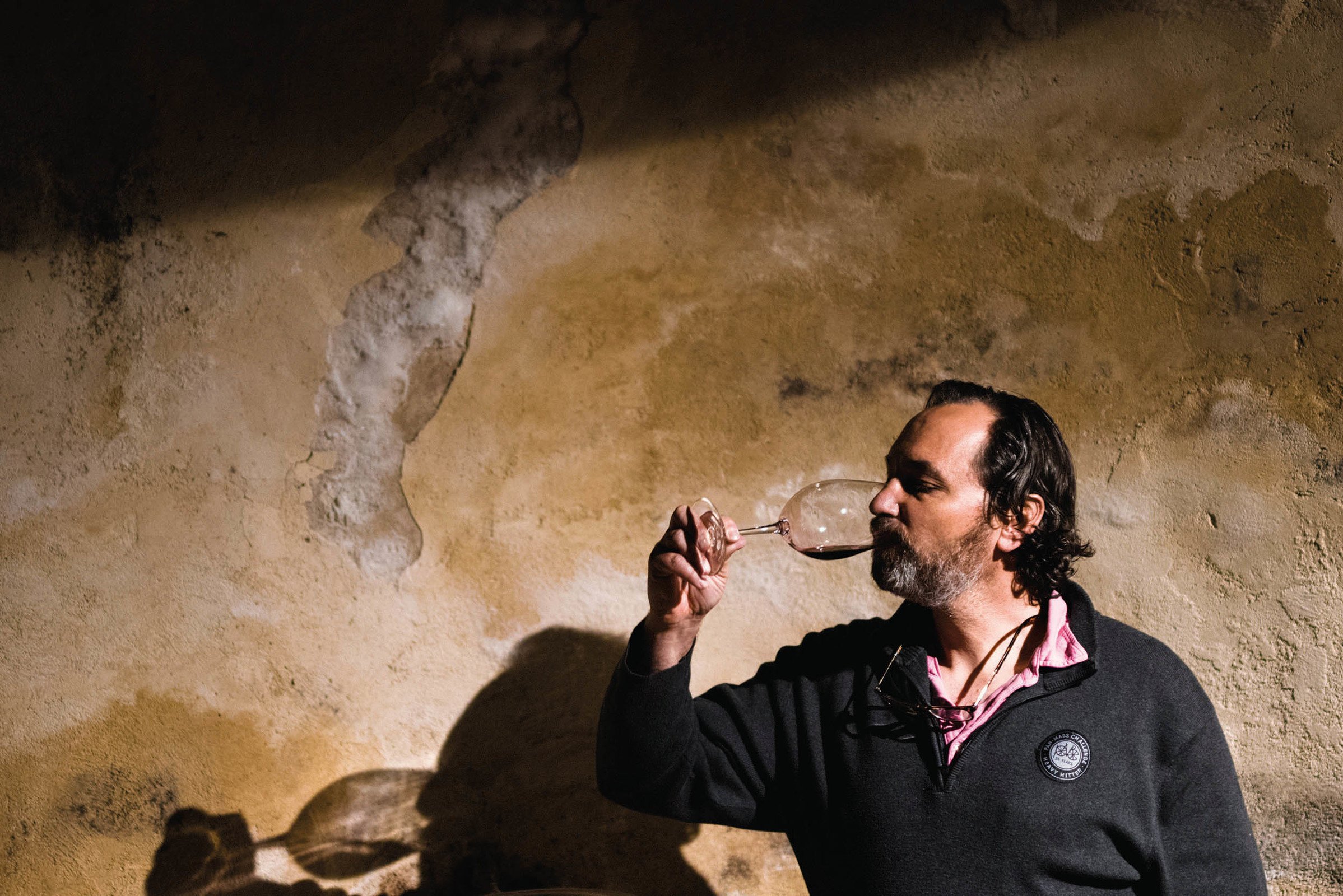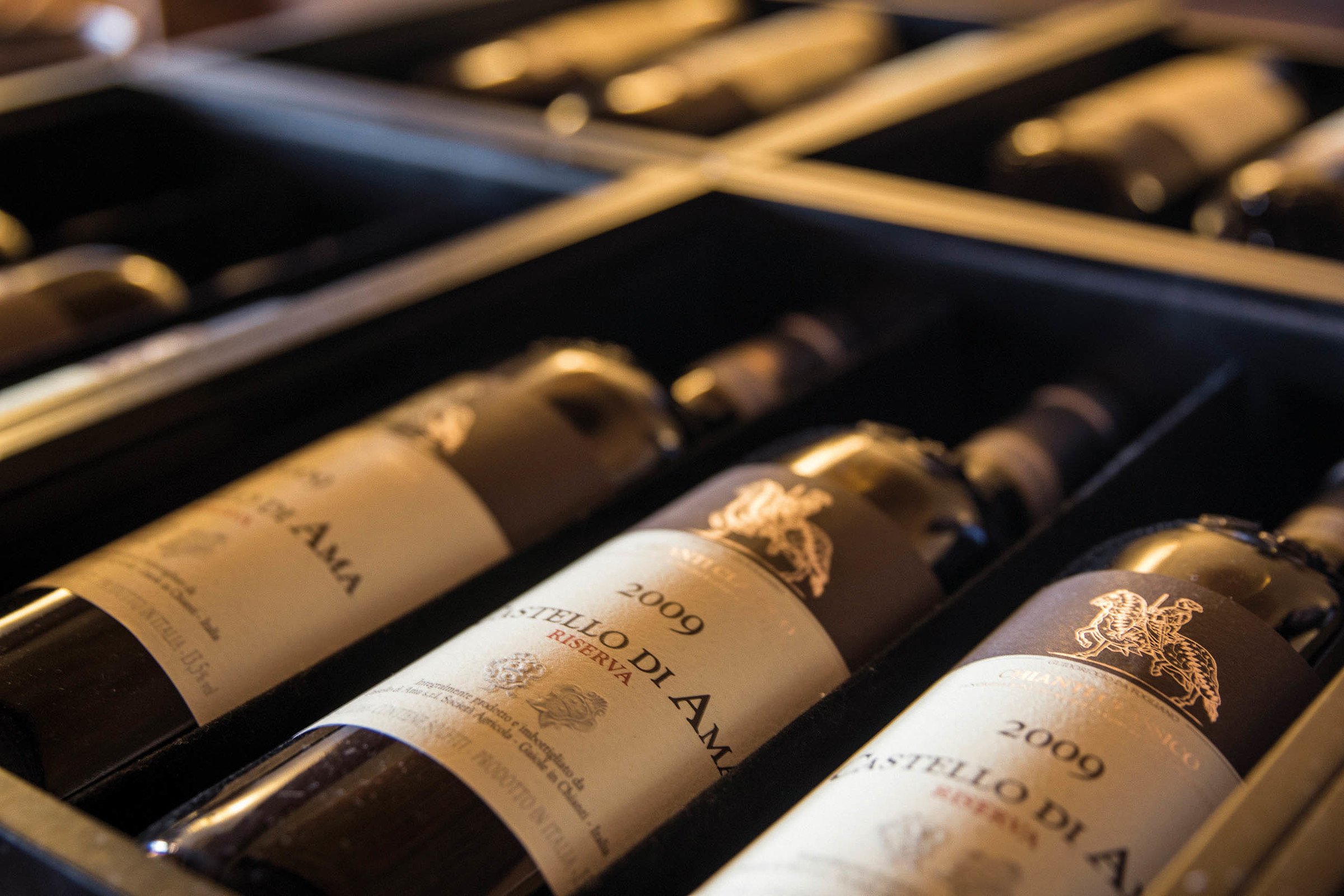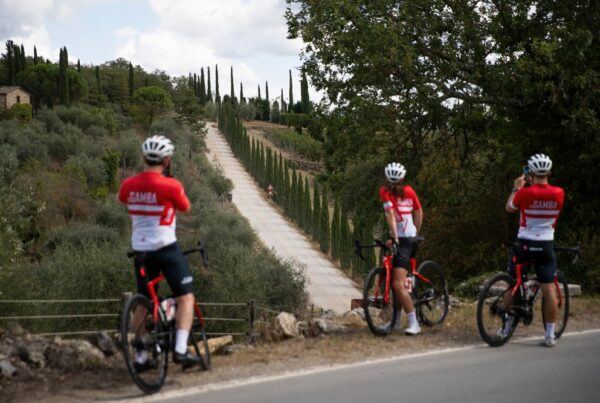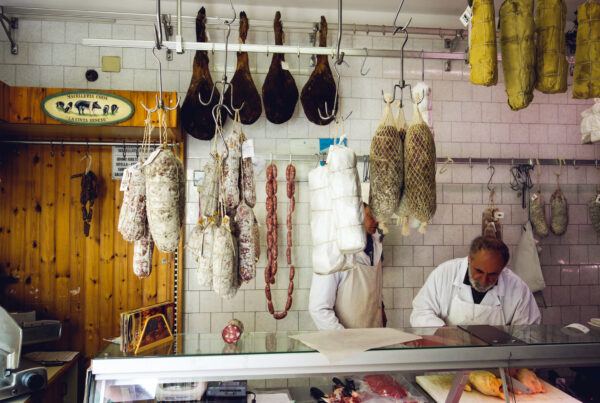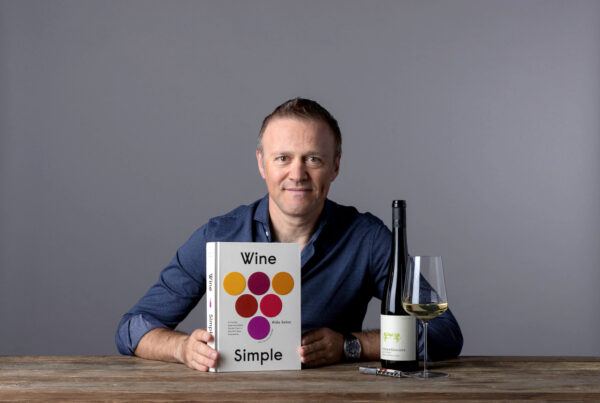Often in Chianti, usually when toiling up one of the many local grades, I found myself envying the grapes. They get to sit still, after all, baking in the Gaiolian sun. And eventually they end up as wine. The luckiest ones reside in the vineyards around Lecchi, where most of the local fruit is destined for the stainless-steel fermenters at Castello di Ama, the winery just up the hill. For Ama is not just another Chianti producer, but a very special place.
Ama is a tiny hamlet where grapes had been grown for 1,000 years. It had a couple villas, some smaller houses, and a chapel, right on the side of a hill with the usual postcard views. After the war, though, it had emptied out, like a lot of little hamlets in Tuscany. (You can’t eat postcard views.) In the 1970s, when the population of Ama was four, a group of four families from Rome bought the place as a weekend retreat, and they started growing grapes again. They hired a winemaker named Marco Pallanti, who inevitably fell in love with one of the Roman daughters, Lorenza Sebasti. Castello di Ama was born.
Ama is no ordinary winery, that’s obvious the moment you step out of the car. As you wander around the grounds, and in many of the buildings, you encounter some of the most astonishing contemporary art installations you’ll ever see. Every year, Lorenza and Marco invite an established artist to spend a few months in residence at Ama, and then to create a work based on their experience there. The artist leaves, the work stays. (Note to self: Be reincarnated as artist.)
“The idea is to start a dialogue between the place and the artist,” says Lorenza. The results of these dialogues are integrated into every corner of the place: in the barrel-aging rooms, among the olive trees, in an underground cistern, and even a 12th-century chapel, which Anish Kapoor transformed into a mediation on Heaven, Hell, and Hinduism. (Not surprisingly, Raul almost fell into the Underworld). Outside, in a small olive grove, one finds knee-high replicas of the world’s great border walls, from the Great Wall of China to the Berlin Wall to the fence that separates Israel from the West Bank, titled “I Never Want To See My Neighbor Ever Again.” Turns out the artist, Carlos Garraicoa, had a long-simmering feud with his own neighbor back home in Havana, but it’s also fun to be able to just step over the Berlin Wall.
But my own favorite work, or works, are also the smallest: A sequence of small, witty drawings on the walls inside one of the villas, by Serbian artist Nedko Solakov. He calls them “Amadoodles,” and they pop up wherever he felt inspired to draw (perhaps after a glass or two of the Riserva): above doorways, around electrical plugs, on ceilings, everywhere you look you find some new, surprising little commentary, one more example of how art makes this place come alive.
Oh, and then there’s the wine: The excelent Chiantis, of course (a bottle of which sits, temptingly, on my wine shelf right now), but their other wines are just as much a creative expression as the art on the grounds. Pallanti trained in Bordeaux, so even his Chiantis are not the run-of-the-mill fare, but he’s also introduced “exotic” grapes to the hills. His single-vineyard Merlot, l’Apparita, trumped Petrus in a blind tasting. Not surprising, since Pallanti cloned Merlot vines from Pomerol, which thrived in the stony Ama soil. There’s another, approachable blend called Haiku, and a few interesting single-vineyard offerings, the essential Vinsanto, and even a surprisingly elegant Chardonnay. Wine is not technically a “recovery” beverage, but in Lecchi it will do.
